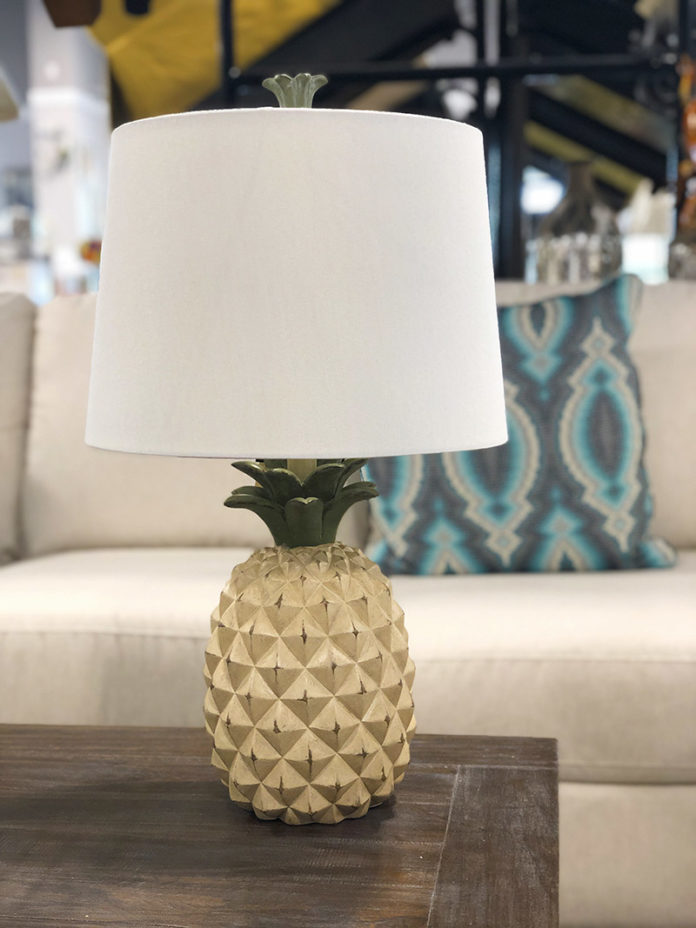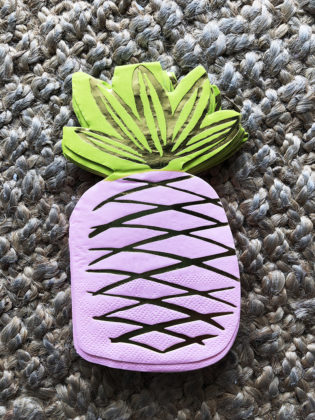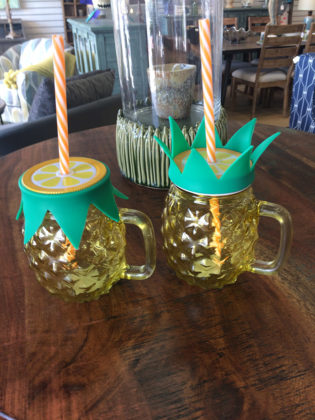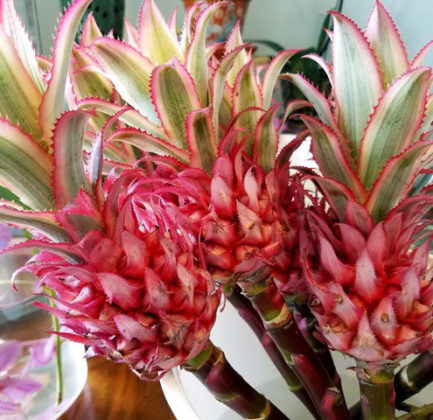Who doesn’t love pineapples? They’re sweet and tangy and sunny and before we became a global economy, they were pretty hard to get in northern climes. But they’ve always symbolized something good — optimism, or welcome, or hospitality or all three. It’s good juju for the home, and a great hostess gift or housewarming gift. But why? How did this become a thing? There are many explanations, but our favorite (and most Keysy) explanation was uncovered in a past issue of Southern Living:
“Once [the sea captain’s] work was done, he would head home, stopping outside his house to spear a pineapple on a fence post. This would let his friends know of his safe return from sea. The pineapple was an invitation for them to visit, share his food and drink, and listen to tales of his voyage.”
FUN FACTS
• A pineapple takes about three years to grow.
• Lop off the top of a supermarket pineapple and stick it in the dirt. It will usually grow. Just be patient (see above).
• With the exception of English-speaking and Spanish-speaking countries, the rest of the world calls pineapples some variation of “ananas.”
• Pineapples were so rare and so prized, that they inferred status in the Victorian age. Pineapples could be “rented” in the afternoon as a table centerpiece, and re-sold later in the day to be consumed.
• One pineapple is actually 200 fruits that grow together.
• The pineapple emoji, when used on the Snap Chat app, means a “it’s complicated” relationship status. When sent through texts, it means “tastes good.” Ahem.
























